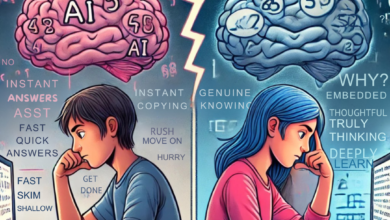Where Are The Book Sanctuaries?: Book Censorship News: November 17, 2023


Last October, I highlighted the movement happening in several communities and public libraries to declare themselves book sanctuaries. Book sanctuaries are institutions committed to upholding the First Amendment Rights of all citizens, wherein book bans and challenges must follow a specific procedure to be considered. They are places where books and the right to read them remain at the forefront of what an institution does, and well-funded, well-connected political groups do not get to wield their power in changing what is available.
The movement for book sanctuaries has only continued to grow since. States like Connecticut have developed grants for community libraries wishing to become such designees, and several libraries in the region have hopped on board.
Thanks to the work of Christina Perucci, a Reading Specialist and librarian who just completed her MLIS at San Jose State University, there is now a way to know what libraries or communities have worked toward the status of book sanctuary. She’s developed a database of all the book sanctuaries across the United States and Canada, which you can access here. It turns out that it is not only libraries or towns that are declaring their communities free from book bans and censorship. So, too, are other organizations and institutions, including a nonprofit, an acupuncture studio, and a cafe, among others.
“As a librarian and a book nerd from way back, I am terrified at the increasing success of book banners and the anemic response from ALA. The idea that the way to improve our schools or our society is by limiting access to information is so appalling to me,” explains Perucci, who began tracking book sanctuaries this summer. “I appreciate the bravery of libraries and librarians who are formally declaring themselves ‘book sanctuaries,’ especially those who are coming up with creative workarounds, like Brooklyn Public Library and the Digital Public Library of America, for those who may not have physical access to a sanctuary.”
While book sanctuaries will not stop book bans — only policy changes, adherence to current policy, and legislation will do that on any significant scale at this point — they are a reminder of how vital access to information and to stories is for so many.
Book Censorship News; November 17, 2023
Note: this week’s news does not include stories that happened Wednesday evening or Thursday due to some personal time out of the office this week. Those will be included next week.
- I told you book fairs were the next fight for book banners, and I’m not wrong. This week, Moms For Liberty in Oklahoma is demanding an end to Scholastic book fairs in the state. Conveniently, this comes the week that Kirk Cameron shared that he’s on the board of a new conservative book fair company hoping to offer “options” outside of Scholastic (those already exist and serve the needs of an entire school, but we’re in a post-fact world).
- Utah is considering a bill to make it even easier to ban books in schools.
- In Iowa, there’s finally now an outline of what books might be in violation of their state law banning books with “sex acts” in schools. Interesting to note this came after the state saw a lot of losses at the school board level by the book banning fans.
- It is becoming more and more possible that South Carolina legislators will be deciding what books are available in school libraries. Elected politicians with open agendas get to decide what your kids have access to, not trained professionals.
- This Washington Post story about Tania Galiñanes, a Florida school librarian who has left the field due to these draconian book ban bills, is one playing out across the country. It is a must-read.
- “One request for reconsideration by Vanessa Fanning for Wauneta-Palisade Schools stated that some books ‘encourage acting on homosexual feelings & normalizes LGBT lifestyles,’ as a reason to remove certain titles. Fanning did not answer phone calls seeking comment.” This is a fantastic piece about book banning across Nebraska.
- Next month, the director of the Hamilton East Public Library (IN) will be leaving. Who could blame her, given what conservative members of this community are doing to the institution there to serve ALL?
- If this is about books in school libraries, how come it’s cool to steal banned books from Little Free Libraries or destroy them altogether? Because I thought the logic was it’s okay for the kids to get the books somewhere else? This story is paywalled and out of Florida.
- A bill being drafted in Wisconsin would limit how people could challenge books in their districts: “Under the draft bill, anyone complaining to a school district or public library about books must reside in the school district or community served by the library, submit written statements showing they’ve read the book entirely and detailing the reasons for their complaint, and include signatures of at least 5% of the residents in the school district or the community served by the library.” The specificity here is to avoid folks from going to Moms For Liberty’s Book Looks and copy-pasting complaints, which has happened in Wisconsin in communities with active Moms chapters (wild, that!).
- USA Today talks how much the book bans are costing districts. I’m glad to see this — in 2021, when the book banning was truly ramping up, several anti-censorship folks said it was imperative to share the costs of book banning.
- Cobb County, Georgia’s school superintendent wants to ask the state legislature to create book ratings.
- An update to a story posted last week out of Brainerd, Minnesota: the Friday meeting did not involve making a decision on the fate of Queen of Shadows. That will come later, and it should be noted that prior titles in the series were retained in the district.
- A Waterloo, Ontario, Canada, Catholic school is withholding access to four LGBTQ+ books from its students.
- A Kansas mayor who tried to get rid of LGBTQ+ books in the public library lost his run for school board. So sad.
- “Journalists Robert Samuels and Toluse Olorunnipa, authors of the Pulitzer Prize-winning book His Name Is George Floyd, are still unclear why they were told they couldn’t read from their book or talk about systemic racism to a room full of high school students in Memphis.” Censorship, censorship all around.
- Red Hood has been formally challenged in Wasilla, Alaska’s public library. A final decision is to be made this week — no link because the only people reporting on this are pro-book banning.
- Three board members in Prattville, Alabama — where the public library has been at the center of book banning controversy for months — have left their roles.
- Hernando County School District (FL) will be debating the fate of 6 more books this week. Their quotes from Moms For Liberty once again share that dumb line of “we don’t ban books but restrict them.”
- In Union, Oklahoma, a Moms For Liberty member tried to get Lucky removed from the high school library. The reaction was not what the group member anticipated, and because there was not a formal complaint — just a school board performance — no action was taken.
- Pine-Richland School District (PA) will not be updating its book challenge or review policy — yet. They’re leaving that to the new school board, which, unfortunately, will be one eager to get their hands in on crafting a ban-friendly policy.
- In Johnston County Schools (NC), any books relating to gender identity or remotely related to LGBTQ+ people will be banned in K-5 settings. This is the state’s seventh-largest district.
- Plattsmouth Public Schools (NE) reviewed 52 books that were challenged and elected to ban one: Triangles by Ellen Hopkins.
- Also in Nebraska, Omaha Public Schools will keep both Tricks and All Boys Aren’t Blue on shelves in the libraries.
- Steven Monacelli is among the best reporters out there on right-wing school board takeovers and similar topics in Texas, so his deep dive into these groups and their missions across the state is necessary reading.
- Quarryville Public Library (PA) held its first board meeting since the township supervisors withheld their annual donation over LGBTQ+ books, and folks were eager to talk about how important the library and its collections are.
- “The Texas Board of Education could vote as early as Tuesday on whether it will recommend school districts to use a batch of new science textbooks, which include accurate descriptions of the causes and effects of climate change. While recommendations by the Republican-dominated board do not carry legal weight, they have an outsized influence on the educational priorities in Texas and can have rippling effects in other school districts nationwide.” We really haven’t talked about the textbook thing as much as we should, in part because that process has not been as public as the library materials have. But Texas Republicans might reject a scientifically accurate textbook for students because it’s “woke” and goes against their agenda.
- Though Nowhere Girls was retained after a challenge in West Ada Schools (ID), the decision has been appealed. This week, the trustees elected to ban the book. It is, of course, a book about fighting rape culture.
- Freehold, New Jersey, schools just banned Flor Fights Back from its digital book platform for students in K-8.
- The school board in Spotsylvania, Virginia, is holding off on implementing a policy that would readily ban books whenever parents felt like complaining. The policy will now go to the incoming school board for consideration, and given the shift in the board there — in a good way — chances are this policy won’t be going any further.
- “What the district found is that the vast majority of parents want their children to have access to all that district’s school libraries offer. Out of the 30,000-plus students in the school district, only 51 parents have restricted their children’s access to limited. No one has selected to restrict their child’s access altogether.” An update out of the Santa Rosa school district (FL), where there are dozens of books being reviewed — only one is available to students during this time. But yet, most parents don’t restrict library access to their students. Make it make sense.
- Blankets will not be banned from the library in Plant High School (FL).
- “Brown indicated he doesn’t believe books with certain sexual content should be available to students, even if most of the book isn’t objectionable. ‘I’m just disappointed that you folks are fine if we have pornographic content in books in our library, and they are in there,’ Brown said. ‘I’ve got five that I quickly picked, and they’re quite astonishing.’” This is someone who has a voice in how a school is run, meaning he helps decide what students learn. The takeaway is that if you don’t feel like following the policy, it’s okay because your feelings are more important than the policy. This is from the Carmel, Indiana, schools. There is plenty of pushback here, but it’s worth emphasizing — THIS is what’s going on.
- Garfield County commissioners put out a statement that they are not allowed to go remove comics from the Garfield County Library (CO) since that job is up to the decisions of the library board. That’s a real sentence in 2023.
-
My Book Was Banned Again — This Time In Retaliation for My Anti-Censorship Work: Book Censorship News, November 10, 2023 -
Most People Don’t Know How Librarians Select Collection Materials, So What Do They Think of Book Bans?: Book Censorship News, November 3, 2023 -
Ending Censorship Applies to Prison, Too: A Prison Banned Book Week News Roundup, 2023 -
They May Not Be The Most Targeted, But They’re Still Banned: Book Censorship News, October 27, 2023 -
Are Gatekeepers Giving Up The Fight Against Book Bans?: Book Censorship News, October 20, 2023 -
What Else Do Parents Who Believe Librarians Should Be Prosecuted for Library Materials Think?: Book Censorship News, October 13, 2023 -
74% of Parents Think Book Bans Infringe on Their Parental Rights: Book Censorship News, September 29, 2023 -
Student Groups Against Book Bans: Book Censorship News, September 22, 2023 -
Book Fairs Will See An Increase In Censorship Attempts This Year: Book Censorship News, September 15, 2023



